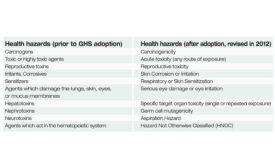Home » Keywords: » safety communication
Items Tagged with 'safety communication'
ARTICLES
Report problems & precursors early & often
Hey, you — keep that door open!
January 16, 2019
Safety can’t afford failing to communicate
Flyers and email alerts aren’t enough
October 9, 2018
5 tips for creating an organization-wide safety culture
Achieving effective engagement
November 1, 2017
Genetic defect risks worry employees
20 questions you might get in hazcom training
September 1, 2016
Become a Leader in Safety Culture
Build your knowledge with ISHN, covering key safety, health and industrial hygiene news, products, and trends.
JOIN TODAYCopyright ©2024. All Rights Reserved BNP Media.
Design, CMS, Hosting & Web Development :: ePublishing













